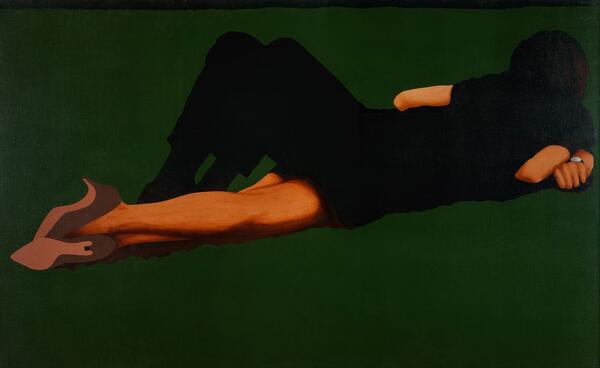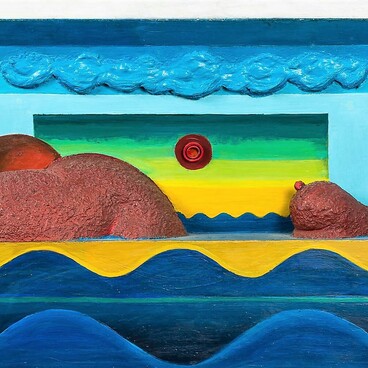“The Lovers” was painted by the American artist Howard Kanovitz in 1965. It shows a close-up image of a couple in love sharing a tight embrace — a man and a woman merging into one figure.
This work has the elements of the cut-out technique which is often used in advertising. Kanovitz adopted it while working on shop windows, cutting out figures and objects from various media and using the fragments to arrange a composition. Kanovitz valued the technique for the opportunity to create new scenes from fragments of photographs that were in no way connected.
Howard Kanovitz was born in Fall River, Massachusetts in 1927. In the 1950s, he moved to New York City and worked as an assistant to a painter Franz Kline. His abstract expressionist paintings were very popular with art critics. The artists of that movement were known for their swift, broad and spontaneous brushstrokes, striving to express every sudden emotion through drops of paint on a canvas.
Kanovitz was always interested in new ways of working with figures and forms on a flat canvas. In 1963, he began using photographs as source material, either appropriated from the media or taken by himself.
The artist was drawn to the “hidden magic” of things: he liked how the combination of detailed premises, objects and living beings often gave a whole new meaning to the composition. While working with photographs, Kanovitz could create different levels of reality, as in the dreamlike world of surrealism.
Howard Kanovitz became one of the pioneers in the photorealist and hyperrealist movements, which emerged in the 1960s and 1970s in response to the abstract art movement. Kanovitz was dubbed by the American art historian Barbara Rose “the grandfather of photorealism”.
Photorealism strove to create pictures that looked photographic and had a great influence on Western and late Soviet art. The movement rejected the painterly qualities by which individual artists could be recognized and instead offered to break from the traditional composition in painting.
This work has the elements of the cut-out technique which is often used in advertising. Kanovitz adopted it while working on shop windows, cutting out figures and objects from various media and using the fragments to arrange a composition. Kanovitz valued the technique for the opportunity to create new scenes from fragments of photographs that were in no way connected.
Howard Kanovitz was born in Fall River, Massachusetts in 1927. In the 1950s, he moved to New York City and worked as an assistant to a painter Franz Kline. His abstract expressionist paintings were very popular with art critics. The artists of that movement were known for their swift, broad and spontaneous brushstrokes, striving to express every sudden emotion through drops of paint on a canvas.
Kanovitz was always interested in new ways of working with figures and forms on a flat canvas. In 1963, he began using photographs as source material, either appropriated from the media or taken by himself.
The artist was drawn to the “hidden magic” of things: he liked how the combination of detailed premises, objects and living beings often gave a whole new meaning to the composition. While working with photographs, Kanovitz could create different levels of reality, as in the dreamlike world of surrealism.
Howard Kanovitz became one of the pioneers in the photorealist and hyperrealist movements, which emerged in the 1960s and 1970s in response to the abstract art movement. Kanovitz was dubbed by the American art historian Barbara Rose “the grandfather of photorealism”.
Photorealism strove to create pictures that looked photographic and had a great influence on Western and late Soviet art. The movement rejected the painterly qualities by which individual artists could be recognized and instead offered to break from the traditional composition in painting.



